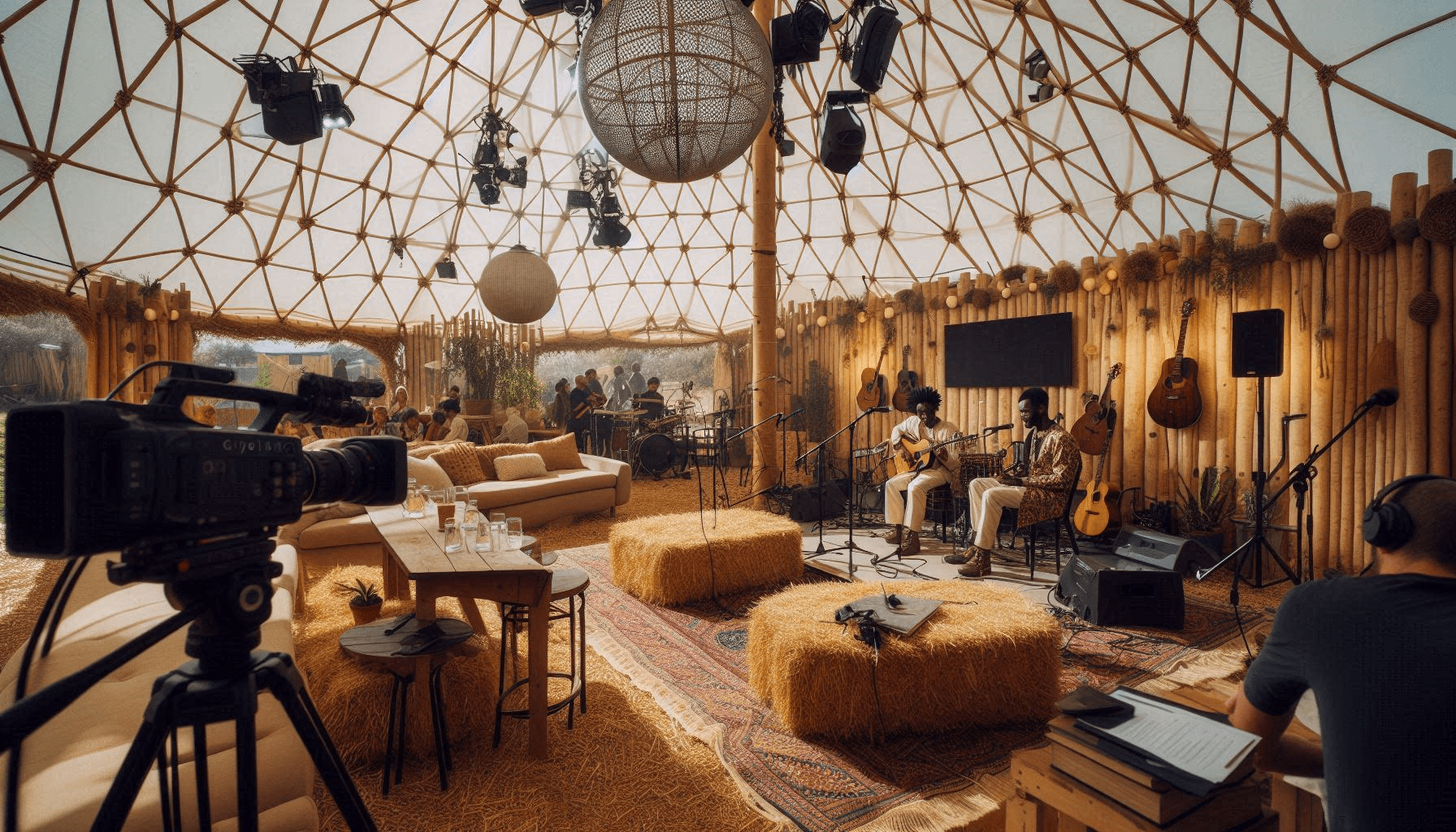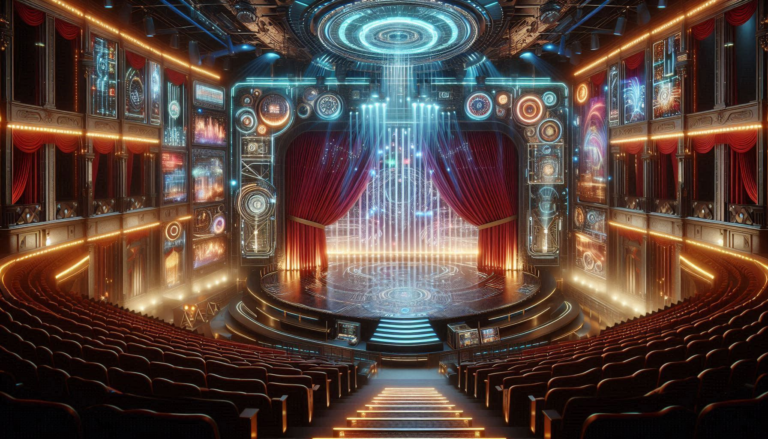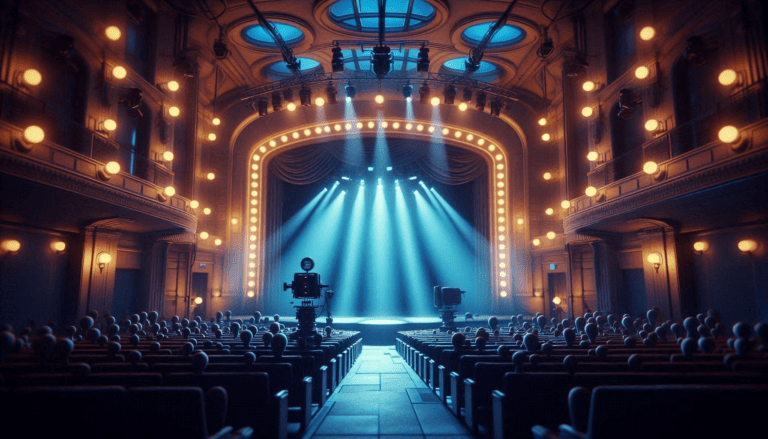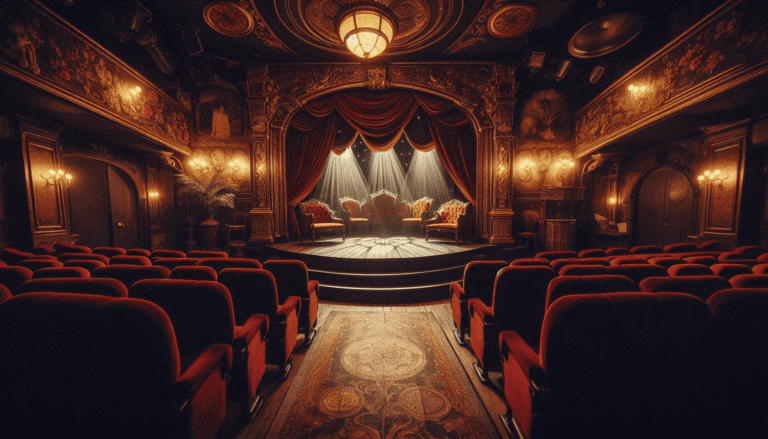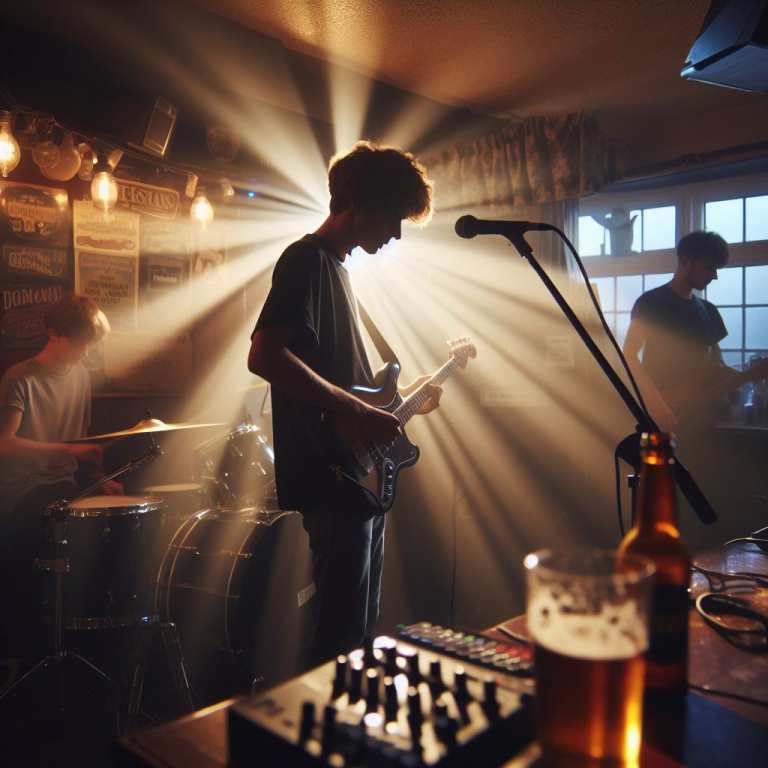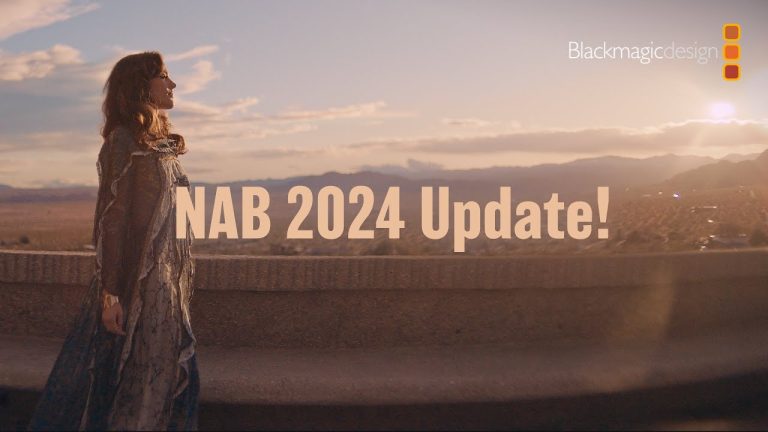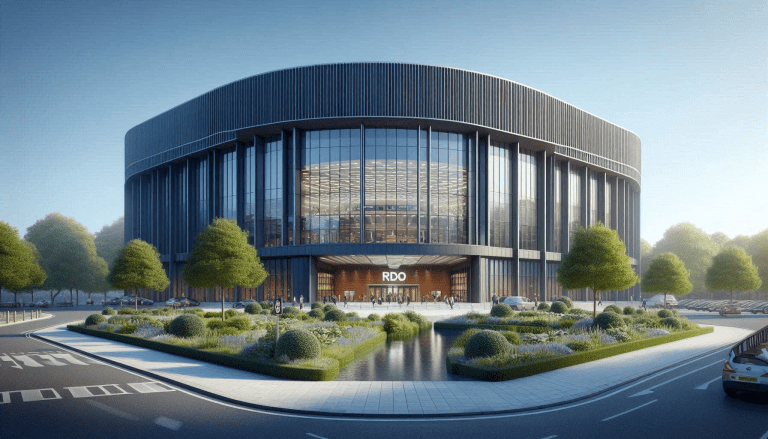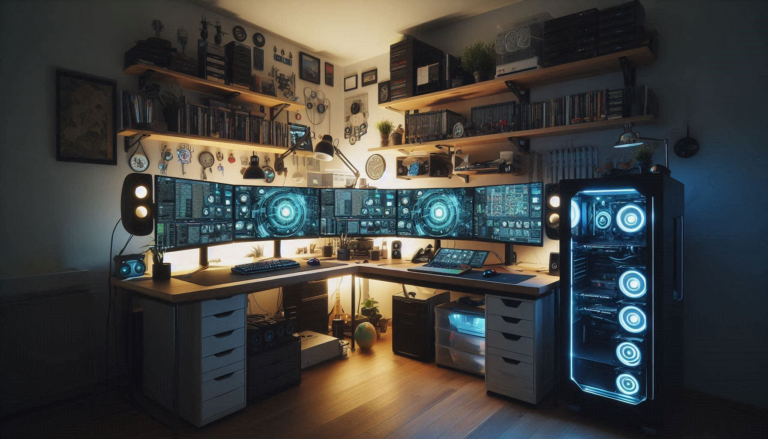Blackmagic multi-stage festival setup
The Festival Experience from the comfort of your sofa!
This blog post is a part of my Rigging for Events series. If you like it and would like to read more you can find some of my older posts linked below.
Several years ago, I was part of a team responsible for the video production at the Beverly Folk Festival in the UK. The client’s request was simple: capture interviews with the artists post-performance and, if possible, some footage of the performances. With a talented crew of eight, including two editors, three camera operators, and three presenters, we accomplished the task with ease. The client was thrilled with our work, and there was even talk of us returning the next year.
Regrettably, the festival was not going to be held again, a fact unknown to us at the time. Nevertheless, over the following few months, I often reflected on ways to enhance our content for the subsequent year. Even now, many years after the event that never was, new ideas for improvements still come to mind, and I think it’s about time I wrote some of these things down and shared them with those who might find them intriguing.
Festival Overview
The Beverley Folk Festival, spanning three days, is a vibrant celebration of folk music, arts, comedy, and spoken word in Beverley, East Riding of Yorkshire. Launched in 1983 by the White Horse Folk Club, the festival flourished over three decades, hosted at both the Beverley Leisure Centre and various local spots in the town.
In 2013, the festival found a new home at Beverley Racecourse, growing significantly over five years. The Racecourse featured the Festival Village with food and craft stalls, open-air performances, the Main Stage Marquee (The Big Top) for headliners, the Concert Marquee (The Little Top) for emerging and established artists, The Atom for late-night sessions and music improvisation, The Racecourse Rooms for diverse programming, and a Children’s Marquee for young attendees. The Fringe Festival also thrived, offering events throughout Beverley Market Place and local pubs.
In April 2018, the festival was suddenly cancelled because it lost its main financial support. But quickly after the cancellation news broke, Fringe Festival organizers decided to step up. They planned a bigger fringe event to take its place.
Staying true to the festival’s original spirit, the revamped Fringe Festival went ahead for three days. It featured shows at local spots like The Tiger, Sun Inn, and Monks Walk pubs, Memorial Hall, East Riding Theatre, and various town centre locations. Since 2022 The Fringe Festival has run under the banner of the Beverly Folk Festival.
The Plan
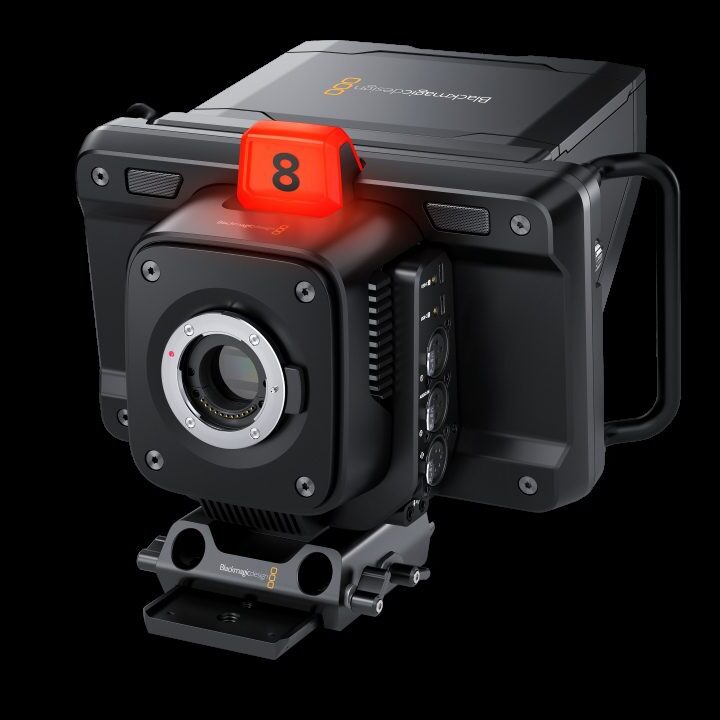
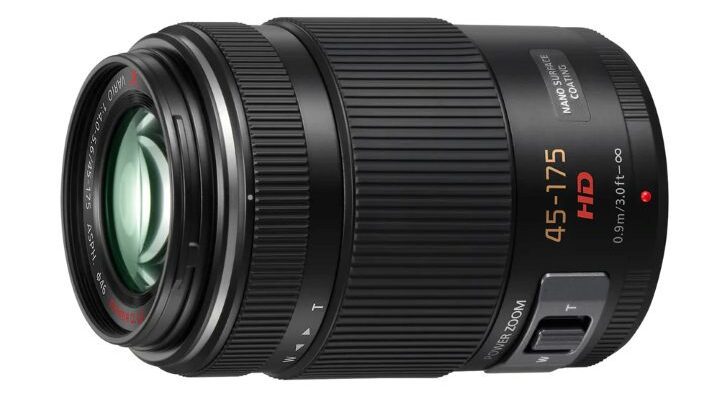
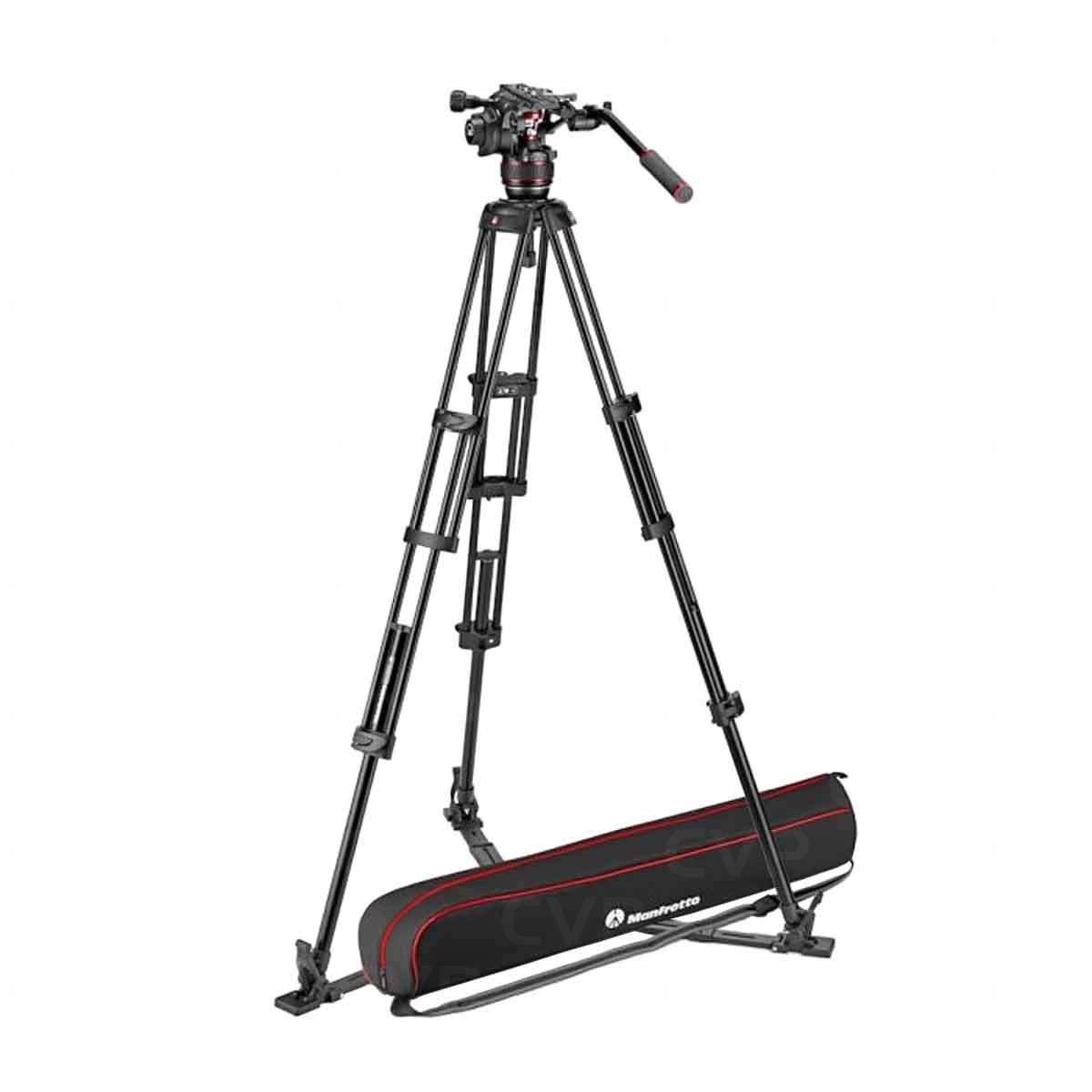
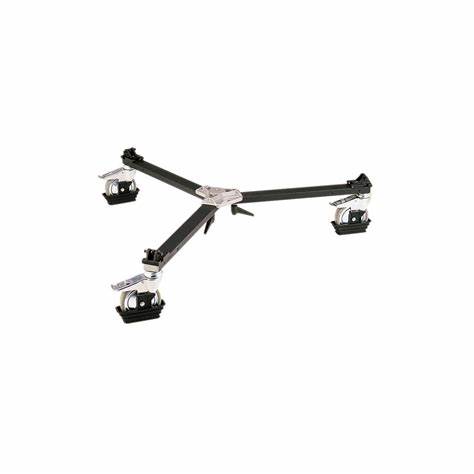

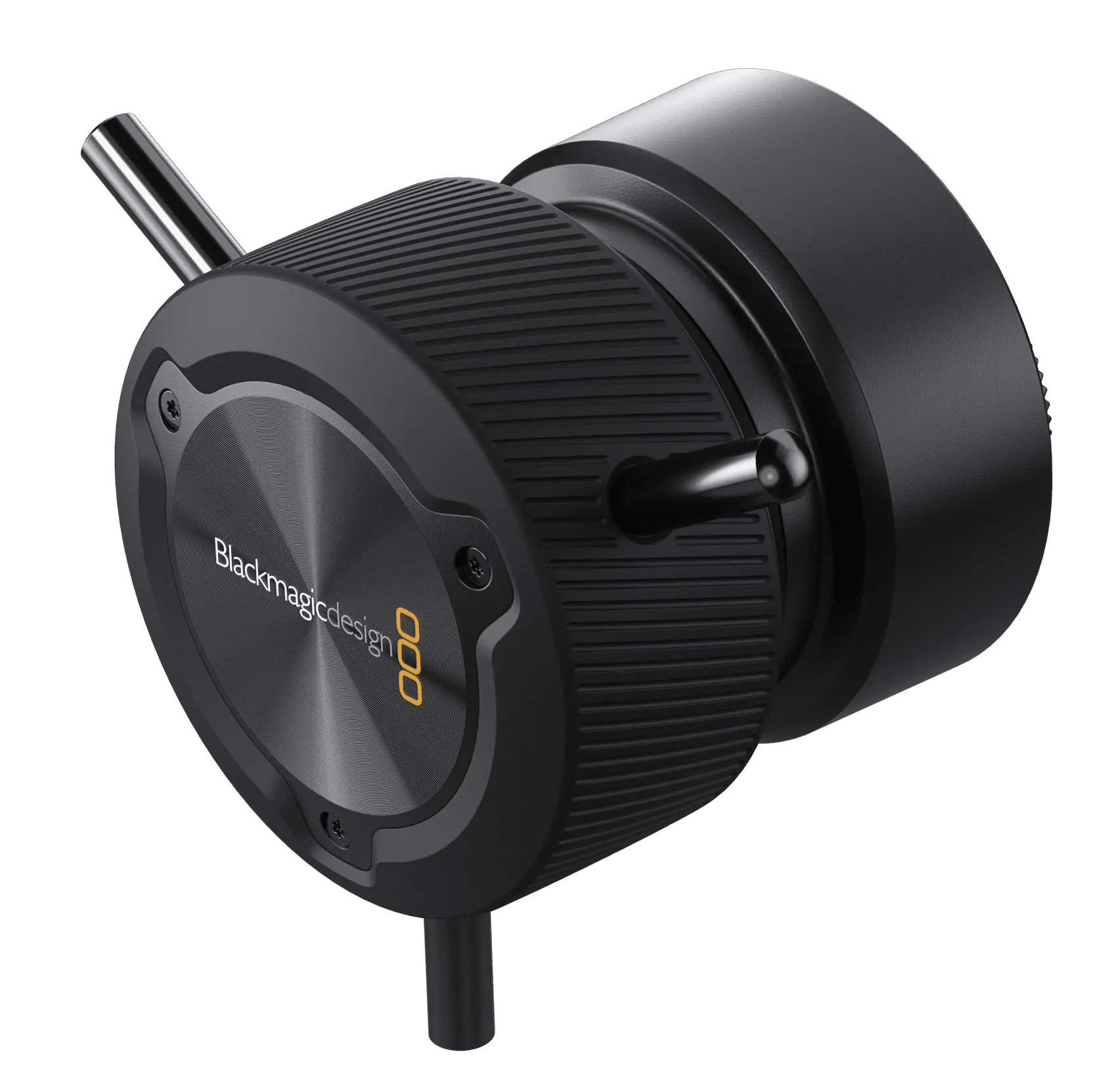
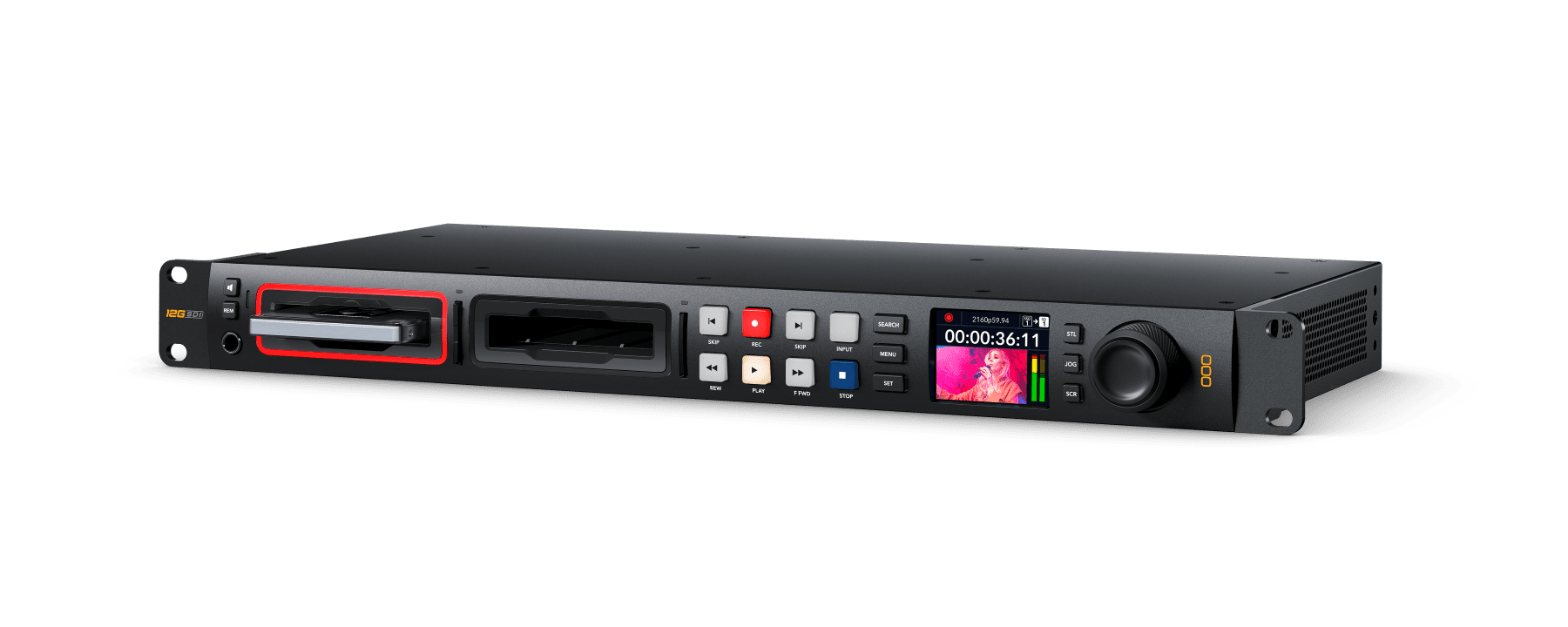
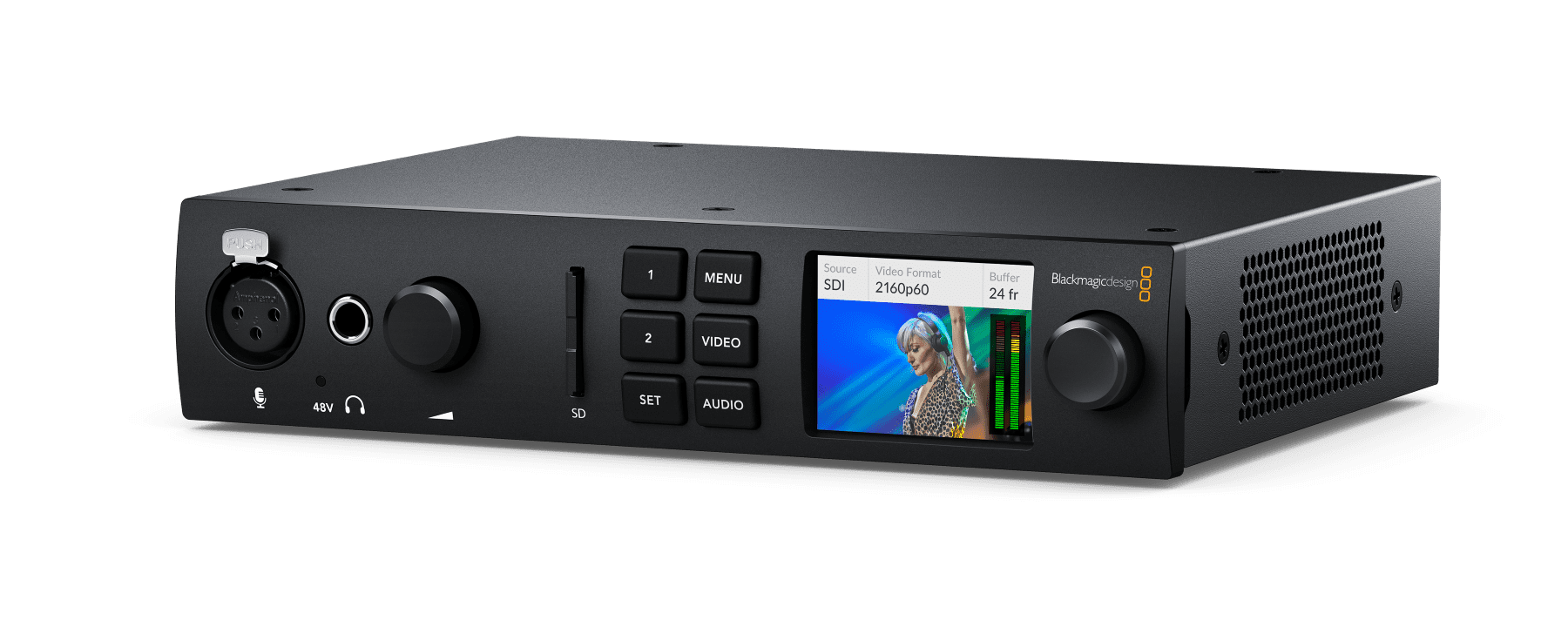
Each venue of the 5 venues used for the folk festival and the additional venue for the interviews and special performances (AKA the Interview Tent) would all have the same three-camera setup. Each camera setup would ideally consist of:
- Blackmagic Studio Camera
- Panasonic LUMIX G X Vario PZ 45-175mm lens
- Blackmagic Zoom Demand
- Blackmagic Focus Demand
- Manfrotto MVK502AM-1 Tripod System
Given that the venues are set up on grass, creating a smooth surface is not feasible. Therefore, I would position two cameras at the rear of the venue—one in the centre and another to the side—and have another camera on a track moving across the front of the stage.
Each camera would connect to a Blackmagic ATEM Constellation 1 M/E 4K, accompanied by four Blackmagic HyperDeck Studio 4K Pros to record each camera feed and play videos within the venue, two Blackmagic Ultra Studio 4K Minis for live graphics, and an ATEM 1 M/E Advanced Panel 10 for control. To enable live streaming to YouTube or other platforms, a Blackmagic Web Presenter 4K would be included.
Before reaching the ATEM, all camera feeds would be split with a Teranex Mini SDI Distribution 12G, the same as for one of the HyperDeck Studio 4K Minis, ensuring a clean feed of each camera and video playback that can be sent to the Interview Tent. Additionally, a program feed would be taken from each venue too.
The Interview Tent

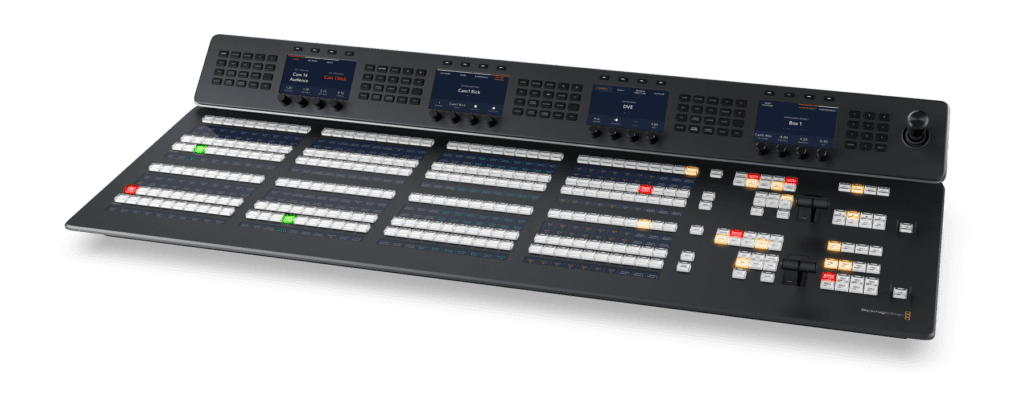
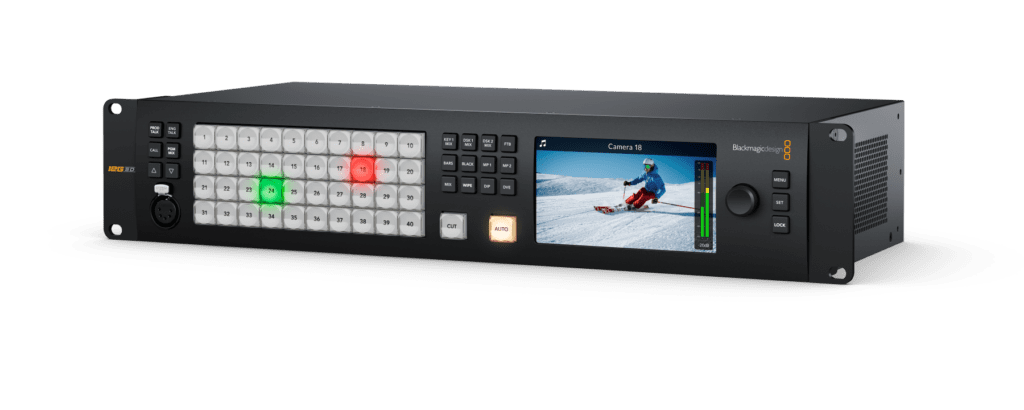
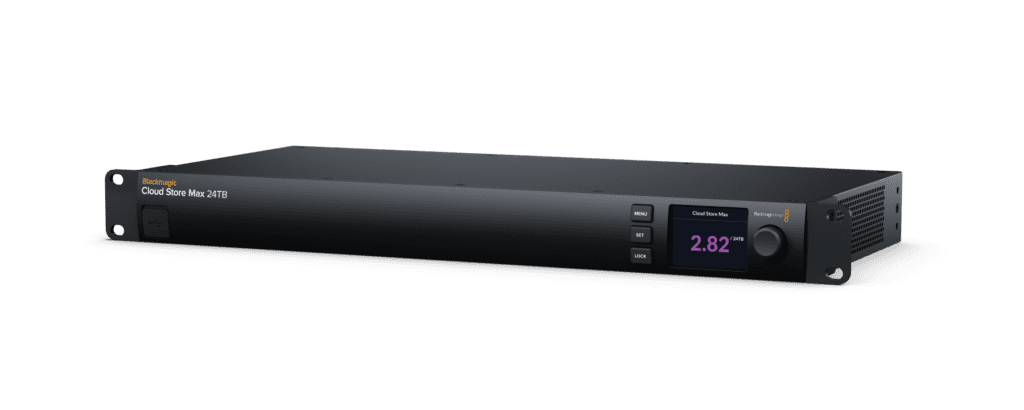
The concept of an interview tent came to me after spotting a huge geodesic tent, aiming to prevent teams from having to dash between venues. The plan is for performers to visit the Interview Tent to freshen up before their interviews, which could be broadcast live or recorded to fill the gaps during acts. To manage the extra content, I’d use an additional HyperDeck Studio 4k Pro to record each program feed entering the Interview Tent.
For playback on the appropriate venue stream, the interviews would be stored on a network drive accessible to all venues or on several hard drives that a runner could shuttle between venues. Blackmagic has a new product that could help with this, the Blackmagic Cloud Store Max 48TB. This device offers high-performance flash storage in a compact 1RU unit, with a 48TB capacity 12 card RAID 0 flash memory core, multiple Ethernet ports, QSFP for high-speed connections, USB-C, and Blackmagic Cloud sync for global file distribution. It’s designed to be fast and efficient, even with many users accessing files simultaneously. We’re going to need to pair this with a 10G ethernet switch as unfortunately, the Clous Store doesn’t have enough Ethernet ports for each venue to connect directly. Ubiquiti has use covered here with their EnterpriseXG 24.
Considering we’ll have 15 cameras, 4 Program Feeds, 5 Hyperdeck Studios, and 2 UltraStudios, it’s necessary to upgrade the ATEM Constellation 1 M/E 4k in the Interview Tent to an ATEM 4 M/E Constellation 4K, complemented by an ATEM 2 M/E Advanced Panel 40.
You may be wondering why I have sent the camera and video playback feeds across to the interview tent as well as the program feeds. Whilst not strictly necessary it not only allows the Vision mixer in the interview tent to be able to bring in some of the feeds live or cut to a camera they have seen something interesting on but it also acts as a backup in case something goes a bit wonky with one on the ATEMS in a venue.
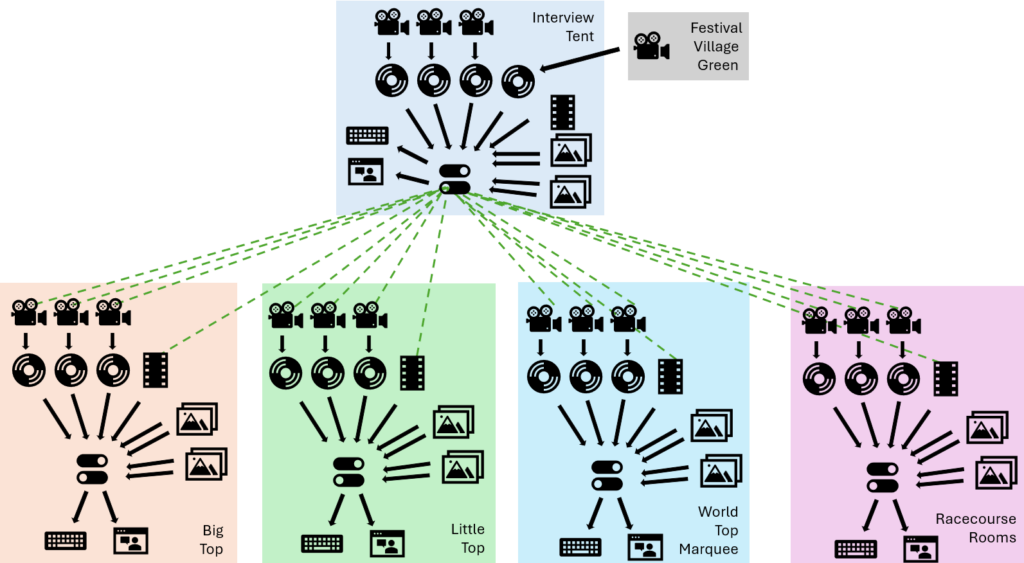
The image above should offer a basic idea of the setup. It omits the Blackmagic Cloud Store and networking details for clarity, but you’re welcome to sketch in your own network connections. Ideally, there should be two distinct runs: one dedicated to the Cloudstore and another for internet streaming.
That’s my strategy for producing multiple live streams during a festival. I’m eager to hear your opinions. As always, feel free to leave a comment below or reply to the social media post that directed you here.

